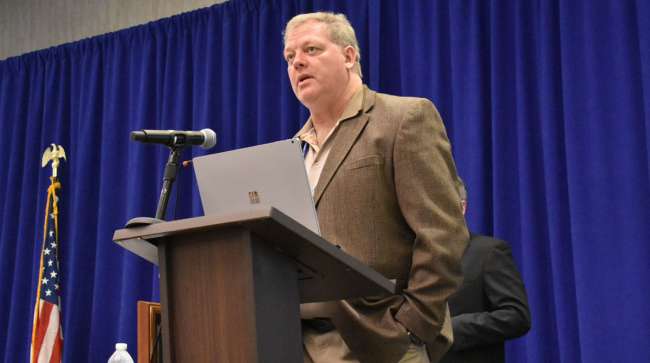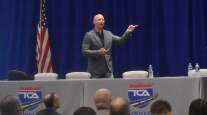Senior Reporter
Trucking Leaders Discuss Impact of Safety Culture on Operations

[Stay on top of transportation news: Get TTNews in your inbox.]
INDIANAPOLIS — Three trucking and insurance executives offered advice on how leaders can adopt technologies and impact their companies’ safety culture from the executive suite during a session at Truckload Carriers Association’s 2024 Safety and Security Meeting.
The discussion also was intended to help truckers gain insight into the steps and strategies involved in achieving minimal accidents within an organization, their key meaningful metrics and the importance of leaders’ roles in fostering a safety-oriented environment.
“One of the things that I look at more frequently is speeding,” Fortune Transportation Co. CEO Perry Olson said June 2. “Not so much as speeding, but where it’s occurring.
“If I’ve got somebody speeding in Montana on an interstate, that’s not where I need to focus. But if I’ve got somebody who’s speeding in a construction or a school zone, that’s more important.”
Olson said he also keeps an eye out for the different problems that individual drivers have beyond the Federal Motor Carrier Safety Administration’s Compliance, Safety, Accountability metrics and operations.

Seymour
“I think we all understand that safety is not negotiable,” Kriska Transportation CEO Mark Seymour said. “You can save a little money now, but you’re going to pay for it later. It’s tough to restart what you’ve stopped. It needs to be there all the time.”
Asked what tech he deploys, Olson said he sees great value in the use of forward- and driver-facing cameras.
“There’s virtually zero debate about the value of forward-facing cameras,” Olson said. “But we employed driver-facing cameras in the early days. Driver-facing cameras provide data, but then what do you have to do with that data?”
“We don’t deploy driver-facing cameras, but forward-facing cameras are the technology that’s been the biggest differentiator in recent years,” Seymour said. “Not just for coaching, but for accident mitigation, accident responsibility and awareness.”
Mike Miller, general manager for Progressive Insurance Fleet Programs, said insurance companies are using data to create metrics.

Miller
“Over time, lots of vendors are working with the data to give you some ideas about behaviors,” Miller said. … “You want to either have the data, or you don’t want to have the data. Understand that insurance companies are going to be looking at that, and it’s going to affect your rates over time.”
Seymour said, “Over the course of my carrier, we have had about 25 acquisitions. But by no means do I want to profess that we’re good at it — but rather we’ve done a lot of it.
“You can’t fix broken. You can’t fix stupid. You can’t fix ignorance. Safety has to be a critical component. As we acquire businesses, we’ve not batted 1.000; we’ve made some mistakes. I’d say now after we have made those mistakes we understand how important it is to ask the right questions.”
Another important issue related to safety is to have your operators under supervision, Seymour added.
“There’s no greater value in your business than having your professional operators report to someone,” he said. “Typically, they’re the only people in your organization who generate revenue. How can they not be important enough to know who they report to?”
Want more news? Listen to today's daily briefing below or go here for more info:




